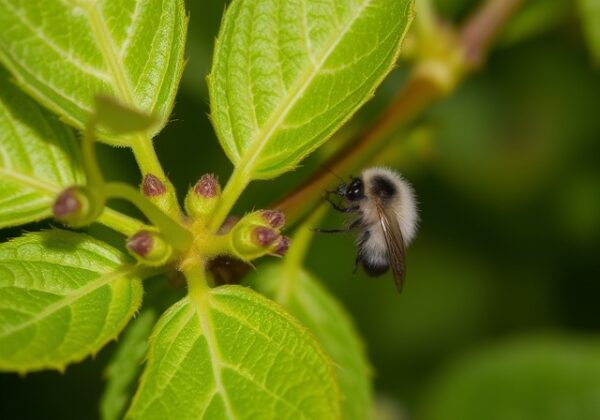Woolly aphid infestation in Shimla apple orchards has raised concerns among growers

Woolly Aphid in Apple plants
Apple growers in key areas of Shimla such as Theog, Rohru and Kotgarh are grappling with a severe outbreak of woolly aphid, a sap-sucking pest that is rapidly spreading in orchards. The pest, which has a cotton-like appearance on the trunk and branches of trees, has started weakening apple plants, threatening both the health of the trees and the quality of the fruit. If left unchecked, the infestation could significantly impact apple production in the region, which is already grappling with other challenges.
For apple growers, the woolly aphid infestation comes at a time when despite efforts to control the pest through conventional methods, its spread seems to be increasing rapidly, leaving farmers worried about the future of their orchards. Many are demanding immediate interventions, including scientific solutions and government assistance, to control the infestation before it causes widespread damage.
Expressing his concern over the growing infestation, Gopal Singh, a grower from Ghog village in Theog, said, “The woolly aphid is spreading rapidly. We have seen white, hairy spots on the trees, and despite our efforts to control them, they keep increasing. The trees are getting weak, and we fear that if this continues, production will be affected.”
Balwinder Ganktu, an apple grower in Tikker, Rohru, also expressed similar concerns, saying, “The entire portion of our orchards is now affected. The aphid attacks young shoots, and if it reaches the roots, the damage is irreversible. We are struggling to keep it under control.” Raghav from Kotgarh said, “This season is worse than previous years. Aphids are everywhere, and we are worried about the quality of apples. The pest is reducing the vitality of the trees and affecting the growth of the fruits.”
Vikas Machhan, another grower from Rohru, highlighted the economic implications. “The damage woolly aphids cause to plants causes apples to not grow to their full potential, which reduces their market value. We need better guidance to control this pest before it spreads further and affects our sales.”
Understanding the woolly aphid problem
The woolly aphid is an insect that attacks apple trees and feeds on their sap, weakening the plants. The insect forms cotton-like clusters on the bark and branches, but more worryingly, it can also target the roots, causing more serious damage if left untreated. Woolly aphids not only damage trees, but also secrete toxins into them, further reducing the plants’ ability to produce healthy fruit.
Research suggests that woolly aphid infestations are more common during hot, dry weather conditions, which allow the insect to reproduce rapidly. The pest’s fast reproduction rate – several generations can be produced in a year – makes it a persistent threat, especially in areas where temperatures are conducive to its growth.
Prevention and Control Methods to Deal With Woolly Aphid
Horticulturalists recommend integrated pest management (IPM) to deal with the woolly aphid problem. This includes regular monitoring of orchards to catch infestations early, pruning infected branches and ensuring orchard hygiene by removing weeds and plant debris that can harbor pests.
Biological control is one of the most effective measures, with lady beetles and parasitic wasps being natural predators of the woolly aphid. These beneficial insects can substantially reduce the pest population without harming plants. Chemical control, while sometimes necessary, must be used judiciously to avoid pest resistance. Systemic insecticides and horticultural oils are common treatments, but they must be used in rotation to maintain effectiveness.
Good nutrition of trees and proper orchard hygiene also play a key role in preventing infestation. Healthy trees are more resistant to pests, and maintaining clean, debris-free orchards limits the breeding grounds of woolly aphid.
Dr. Rakesh Kumar, Department of Entomology, Dr. Y.S. Parmar University of Horticulture and Forestry, Nauni, detailed information on woolly aphid infestation in apple plants, its symptoms and its management
With woolly aphid infestation posing a major threat to apple orchards in Shimla, orchardists are demanding immediate action. Though traditional control methods are being used, the rapid spread of the pest calls for a more robust and scientific approach to protect the livelihoods of apple farmers and ensure healthy yields.
Effective pest management strategies supported by research and expert guidance are crucial in tackling the infestation. Constant monitoring, along with biological and chemical controls, can help protect orchards and ensure that the region’s apple production remains unaffected by this growing threat.

Continuing the achievement of the journey of effectiveness and credibility of more than 10 years in the career of journalism, as a woman journalist, I am Serving as the founder, promoter and editor of DiaryTimes with the trust and support of all. My credible coverage may not have given a big shape to the numbers, but my journey presents articles that make you aware of the exact and meaningful situations of Himachal’s politics, ground issues related to the public, business, tourism and the difficult geographical conditions of the state and financial awareness. DiaryTimes, full of the experience of my precise editorial expertise, is awakening the flame of credible journalism among all of you, so that the eternal flame of meaningful change can be lit in the life of the people of the state and the atrocities being committed against the people can be brought to the fore, I am motivated for that. If even a small change comes with the power of my journalism and the whole world becomes a witness to that issues, then I will consider myself fortunate.





